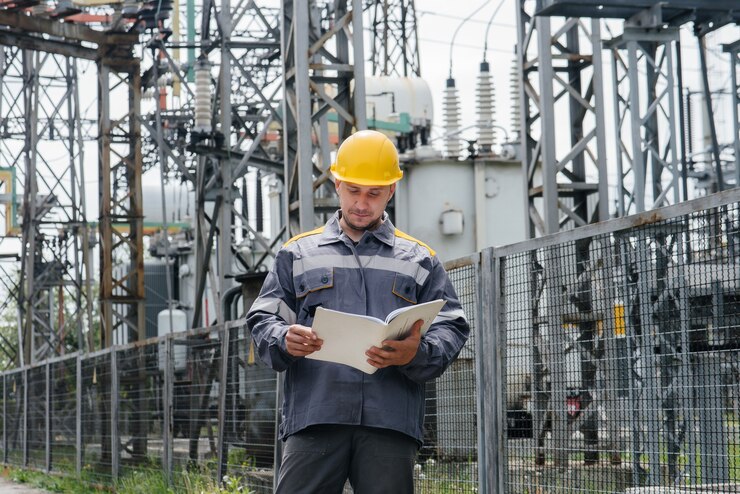Contatc
Safety Standards for Transmission Line Workers
2025-02-10
Safety Standards for Transmission Line Workers: Ensuring Protection
The lives of the transmission line workers are at risk daily from factors such as Electrocution, and heights dangers by falling from heights. As personnel, who are involved in a very sensitive and critical industry that involves the transmission of electricity, it is of course important that transmission line workers adhere to certain codes of conduct that would help ensure safety both for themselves and for other individuals. This article aims to address the important measures that need to be taken to ensure that safety standards for transmission line workers will be safe while at work in areas of risk.
The Importance of Safety for Transmission Line Workers
Electrical wiremen who work in constructing and maintaining high voltage transmission lines are among the people who face the highest job risks in the global society. In the case of the United States, workers in the construction industry especially power line workers are at high risk given the electrical, falls, and other or other risky fatalities. Consequently, it is important to ensure high compliance with safety standards to minimize the occurrence of accidents, injuries, and deaths.
The common risks that are associated with transmission line workers are:
Arc Flash Hazards:
A fast discharge of energy is enough to cause burns or even the loss of life.
Electrical Shock Risks:
The risks associated with energized lines include deaths or severe injuries resulting from electric shock.
Falls:
After analyzing the different tasks performed by the employee during transmission line work, one will realize that the employee holds his work at very high heights and any slip can be fatal if protection from falling is not well observed.
Safety Regulations and Standards
ERGs are legislated standards and regulations to cater to the safety of the transmission line workers. OSHA stands for Occupational Safety and Health Administration while the other is National Electrical Safety Code. These organizations have certain rules and regulations to take measures towards avoiding such operations and providing safe working conditions for the transmission line workers.
OSHA Regulations for Linemen
In the United States, OSHA has emphasized safety measures that relate to the electrical safety of the workers. The following are some of the OSHA requirements for the workers handling transmission lines:
Personal Protective Equipment (PPE):
It is required that linemen put on safety features such as insulated gloves, rubber shoes, and protective clothing to protect them from electrical currents.
Lockout/Tagout (LOTO) Procedures:
These procedures prevent the exposure of working personnel to energized lines when conducting their maintenance activities.
Fall Protection Systems:
Harnessed lanyards also have become a mandatory accessory for transmission line workers as they work at great heights.
National Electrical Safety Code (NESC)
The NESC also lists other provisions relating to the erection, maintenance, and operation of electrical lines and equipment. It includes several measures that are as follows:
Clearances:
The permitted proximity should not be crossed between the transmission lines and other structures to avoid the occurrence of accidents.
Work Practices:
NESC identifies correct measures appropriate for dealing with and sustaining high voltage systems minimizing the chances of electrical shocks.

Guidance for Safety While Working on Transmission Line
Personal Protective Equipment (PPE)
Personal protective clothing is important to reduce the risk of electric shocks in case of accidents among the linemen. The different personnel handling transmission lines require protective wear and other protective tools in the form of;
Insulated Gloves and Sleeves:
To protect against electrical shocks.
Hard Hats:
For protection against falls from heights and other related flying objects.
Rubber Insulating Mats:
To shield workers from electrical ground faults.
Arc Flash Suits:
As the protective covering to guard against thermal shock in case of an arc flash occurrence.
Fall Protection for Linemen
It remains indispensable when operating at a certain elevation above the ground or when inclined to start a job at such a platform. Linemen should be equipped with:
Full-Body Harnesses:
It is used purposely to reduce forces acting on a certain area in the incidence of a fall.
Lanyards and Retractable Lifelines:
To prevent free-fall situations.
Guardrails and Safety Nets:
As a specification, it is used to add some level of safety when one is handling jobs that involve climbing towers or more structural erections.
Safe Work Practices
These practices therefore mean that the workers have to adhere to certain precautionary measures while at work such as:
Two-Person Rule:
It is recommended that observations be carried out in twos to ensure backup in case of incidents and emergencies.
Pre-Task Risk Assessments:
In all working situations, workers must assess the risks of an activity before commencing the work.
Regular Equipment Inspections:
Check whether the equipment, tools and other protective equipment required on the site are in good working condition.
Emergency Response for Transmission Line Accidents
Even if the best effort is made to minimize the risk of an accident, there is always a need to have a disaster management response system in place. The workers should also be provided with skills in first aid, cardiopulmonary resuscitation, and electrocution emergencies.
Emergency Response Measures Include:
First-Aid Kits:
With regards to initial first aid that is given to the participants or any individual on the site in case of an injury.
Rescue Plans:
They have identified the following best-case practices in evacuating the injured workers:
Communication devices:
Make sure that the worker should always be able to contact rescue services or the supervisor.
Safety Standards for Specific Tasks
Thus, one can notice that various tasks in the process of transmission line work require engaging in different levels of risk. Now it is worth considering some of these tasks and the specific safety requirements relating to them.
Transmission Line Construction Safety
The construction of transmission lines is a delicate process that should be coordinated and executed with safety measures. Possible dangers include falling or moving structures, equipment, and vehicles, energized lines amongst other related hazards. Safety measures include:
- Effective training of the workers on the risks associated with construction work.
- Measures to ensure that only allowed individuals gain access to the work zones.
- Legal operation of cranes and other heavy machinery that meet the set standard by their operators.
Transmission Line Maintenance and Repair Safety
It is important to ensure that the lines of transmission are always up and running which can be achieved through proper maintenance. The identified safety standards when it comes to maintenance and repair include:
Arc Flash Protection:
Make sure that the workers are shielded against risks associated with arc flashes.
Lockout/Tagout Procedures:
Switch off circuits before there is any kind of repair work being conducted.
Helicopter Work Safety for Transmission Lines
Helicopter is used in some of the transmission line work carried out. Nevertheless, there are various unique risks and safety factors associated with maintenance and inspection of helicopters through the use of helicopters:
Helicopter Rigging Safety:
Utilise standard harnesses and safety ropes that are used in connecting the workers to the helicopters.
Communication Systems:
Maintain regular interaction of the helicopter pilot with the ground staff.
The Role of Safety Training
Safety training is an imperative tool in protecting the numerous employees who work especially at the transmission line. This includes:
Routine Safety Drills:
It is for the preparation of the workers in case of incidences of force majeure.
Specific Electrical Hazard Training:
Solutions relating to potential hazards that must be addressed include arc flash, electrical shock, and fire occurrences.
Height and Fall Protection Training:
To enable the worker to move about at these elevated work sites without much danger of a fall.
Conclusion
The safety standards of transmission line workers are paramount to reducing accidents and ensuring the reliability of the power grid. By following established safety standards, using proper protective equipment, and adhering to safe work practices, transmission line workers can mitigate the risks they face daily. Ongoing safety training and compliance with regulations, like those set by OSHA and NESC, play a crucial role in maintaining a safe working environment. For more information on transmission line safety standards, visit our safety guidelines page.

Hey, I’m Chunjian Shu
"X.Y. Tower: Reliable, innovative solutions for high-quality towers and electrical equipment with professional service.
